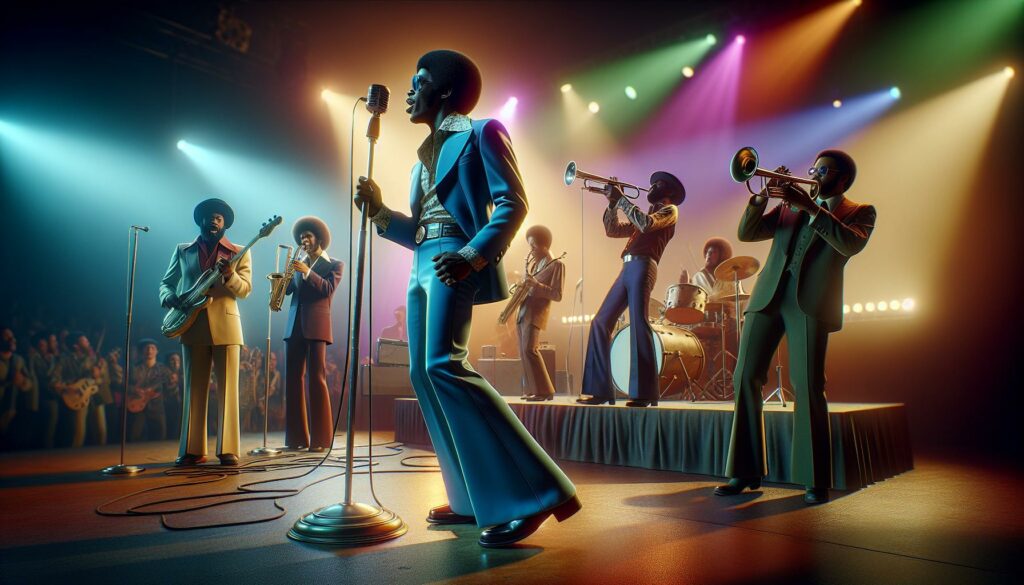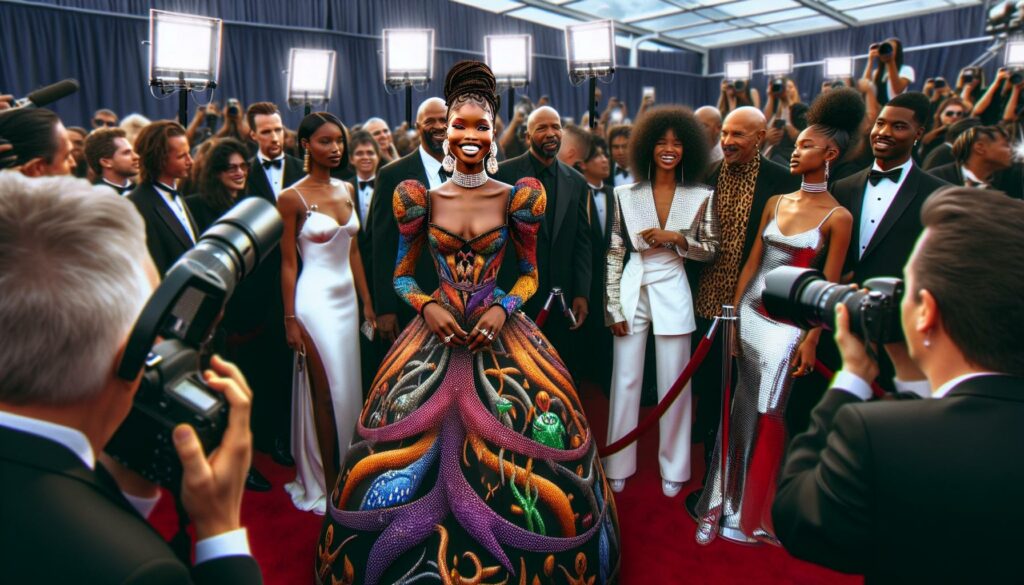Black soul music holds a special place in my heart as one of America’s most influential musical genres. Born from the rich traditions of gospel and R&B in the 1950s and early 1960s, soul music became the soundtrack of a cultural revolution that changed the face of popular music forever. When I think about soul music I’m instantly transported to the golden era of artists like Aretha Franklin James Brown and Sam Cooke. Their powerful voices and emotional performances didn’t just entertain – they spoke to the struggles hopes and triumphs of Black Americans during the Civil Rights Movement. This raw authentic expression resonated far beyond its origins creating a lasting impact on modern music that we still feel today.
- Black soul music emerged in the 1950s from the fusion of gospel and R&B, pioneered by legendary artists like Ray Charles, Sam Cooke, and James Brown
- Two major record labels shaped soul music’s golden age: Motown Records in Detroit with its polished sound, and Stax Records in Memphis with its raw, emotional style
- Key musical elements include powerful vocal techniques (melismas, gospel-influenced runs), dynamic horn sections, Hammond organs, and rhythm sections that created the genre’s signature sound
- Soul music played a crucial role in the Civil Rights Movement, with artists using their platform to address social justice issues through powerful anthems and performances
- The genre influenced fashion trends and cultural identity, from Motown’s sophisticated formal wear to Stax’s raw aesthetic, creating lasting impact on style and visual expression
- Modern evolution of soul continues through neo-soul and contemporary artists, blending traditional elements with digital innovation while maintaining emotional authenticity
Black Soul Music
Black soul music emerged in the 1950s from the fusion of sacred gospel and secular rhythm & blues. This transformative blend created a distinctive sound that captured both spiritual depth and earthly experiences.
Gospel and R&B Roots
The foundation of soul music lies in African American gospel traditions dating back to the 1930s. Gospel artists emphasized emotional vocals, call-and-response patterns and piano-driven melodies in churches across America. R&B contributed driving rhythms, electric instrumentation and themes of love, loss and daily life.
Key elements that shaped soul music’s emergence:
- Gospel quartets incorporating R&B arrangements
- Church organs and pianos merging with electric guitars
- Sacred vocal techniques applied to secular subject matter
- Blues-based chord progressions supporting gospel-style melodies
Early Pioneers of Soul
Ray Charles established the soul music template in 1954 with “”I Got A Woman.”” His groundbreaking approach merged gospel fervor with R&B rhythms creating the first soul hit. Early innovators who defined the genre:
| Artist | Breakthrough Song | Year | Label |
|---|---|---|---|
| Ray Charles | I Got A Woman | 1954 | Atlantic |
| Sam Cooke | You Send Me | 1957 | Keen |
| Jackie Wilson | Lonely Teardrops | 1958 | Brunswick |
| James Brown | Please Please Please | 1956 | Federal |
- Raw emotional expression
- Gospel-influenced melodic runs
- Intense vocal dynamics
- Personal storytelling approaches
The Golden Age of Soul Music
Soul music reached its pinnacle during the 1960s with two major record labels defining distinct sounds. The era produced iconic artists like Otis Redding, Marvin Gaye, The Supremes, Wilson Pickett who created timeless classics that shaped American popular music.
Motown’s Signature Sound
Motown Records established a polished Detroit sound characterized by sophisticated arrangements, precise vocal harmonies, and orchestral instrumentation. Berry Gordy Jr. founded the label in 1959, creating hit-making groups including The Supremes, The Temptations, The Four Tops with chart-topping singles such as “”Baby Love,”” “”My Girl,”” “”I Can’t Help Myself.”” The label’s in-house band, The Funk Brothers, provided the distinctive rhythmic foundation that defined songs like Marvin Gaye’s “”I Heard It Through the Grapevine”” and Stevie Wonder’s “”Signed, Sealed, Delivered I’m Yours.””
- Otis Redding’s passionate performances on “”(Sittin’ On) The Dock of the Bay””
- Sam & Dave’s dynamic energy in “”Soul Man””
- Wilson Pickett’s intense delivery on “”In the Midnight Hour””
- Carla Thomas’s soulful interpretations like “”B-A-B-Y””
| Record Label | Location | Notable Artists | Signature Elements |
|---|---|---|---|
| Motown | Detroit | The Supremes, Marvin Gaye, The Temptations | Polished production, orchestral arrangements |
| Stax | Memphis | Otis Redding, Sam & Dave, Wilson Pickett | Raw sound, prominent horns, intense vocals |
Key Elements of Soul Music
Soul music combines powerful vocal performances with rich instrumentation to create an emotionally charged sound. These fundamental components work together to deliver the genre’s signature emotional impact.
Vocal Techniques and Expression
Soul vocalists employ distinctive techniques to convey deep emotional resonance. Raw intensity manifests through controlled vocal runs melismas raspy inflections. The use of call-and-response patterns derived from gospel traditions creates dynamic interactions between lead singers backup vocalists. Vocal improvisation includes:
- Melismatic singing (multiple notes per syllable)
- Gritty tones growls falsetto shifts
- Gospel-inspired shouts hollers moans
- Strategic use of vibrato emotional emphasis
- Conversational phrasing personal narratives
Musical Arrangements and Instrumentation
Soul music’s instrumental foundation combines rhythm sections with horn arrangements. The characteristic instrumentation includes:
- Hammond B3 organ with Leslie speaker effects
- Punchy horn sections (saxophones trumpets trombones)
- Electric guitar with rhythmic chord patterns
- Bass guitar walking bass lines syncopated grooves
- Dynamic drum patterns with emphatic backbeats
- Piano with gospel-influenced chord progressions
| Element | Purpose |
|---|---|
| Horn riffs | Punctuate vocal phrases add rhythmic drive |
| String sections | Create emotional depth dramatic tension |
| Rhythm guitar | Maintain steady groove rhythmic foundation |
| Bass drum patterns | Establish dance-friendly pulse momentum |
| Backing vocals | Support lead vocals provide harmonies |
Social Impact and Cultural Significance
Black soul music transcended its musical origins to become a transformative force in American society during the 1960s civil rights era. The genre’s impact extended beyond music to influence social movements, fashion trends, and cultural identity.
Civil Rights Movement Connection
Soul music emerged as the soundtrack of the Civil Rights Movement, with artists using their platforms to address racial inequality and social justice. Songs like Sam Cooke’s “”A Change Is Gonna Come”” (1964) and James Brown’s “”Say It Loud – I’m Black and I’m Proud”” (1968) became anthems for civil rights activists. Notable examples of soul music’s role in the movement include:
- Creating solidarity through communal performances at rallies and marches
- Addressing systemic racism through powerful lyrics and messaging
- Supporting fundraising efforts for civil rights organizations
- Inspiring youth participation in social activism
- Documenting the Black experience through musical storytelling
Fashion and Style Influence
Soul artists pioneered distinctive fashion trends that reflected Black pride and cultural expression. The following style elements defined the soul era:
- Motown’s sophisticated formal wear: matching suits, sequined gowns, coordinated group outfits
- Stax Records’ raw aesthetic: leather jackets, bold patterns, African-inspired designs
- Signature hairstyles: natural afros, processed styles, elaborate updos
- Accessories: statement jewelry, platform shoes, wide-brimmed hats
- Color palettes: vibrant prints, metallic fabrics, bold color combinations
The fashion trends established by soul artists influenced:
- Mainstream fashion designers
- Album cover art direction
- Stage costume design
- Street fashion trends
- Music video aesthetics
- Breaking traditional fashion barriers
- Celebrating Black beauty standards
- Inspiring future generations of performers
- Influencing global fashion trends
- Creating iconic visual signatures
Modern Soul Music Evolution
Soul music’s evolution in the modern era demonstrates remarkable adaptability while maintaining its emotional core. The genre experienced significant transformation through digital innovation integration authentic expression.
Neo-Soul Movement
The Neo-Soul movement emerged in the 1990s as a fusion of traditional soul elements with contemporary R&B hip-hop jazz influences. Artists like D’Angelo Erykah Badu Maxwell pioneered this subgenre characterized by:
- Live instrumentation combined with modern production techniques
- Organic vocal arrangements featuring intricate harmonies layering
- Conscious lyrical themes addressing social issues personal growth
- Jazz-influenced chord progressions complex rhythmic patterns
- Vintage recording equipment usage to capture authentic analog warmth
Notable Neo-Soul releases include D’Angelo’s “”Brown Sugar”” (1995) Erykah Badu’s “”Baduizm”” (1997) Maxwell’s “”Urban Hang Suite”” (1996).
Contemporary Soul Artists
Modern soul artists continue to expand the genre’s boundaries while honoring its roots through innovative approaches:
| Artist | Signature Sound | Notable Album | Release Year |
|---|---|---|---|
| Anderson .Paak | Funk-infused soul | Malibu | 2016 |
| Leon Bridges | Retro-soul revival | Coming Home | 2015 |
| H.E.R. | Guitar-driven R&B | Back of My Mind | 2021 |
| Daniel Caesar | Alternative R&B | Freudian | 2017 |
- Digital production techniques with traditional soul elements
- Cross-genre collaboration expanding soul’s sonic palette
- Social media platforms for direct fan engagement distribution
- DIY production methods enabling independent artistic control
- Streaming-optimized song structures maintaining soul’s emotional depth
Black soul music stands as one of the most influential genres in American musical history. I’ve explored its journey from gospel roots through the Civil Rights era and into modern interpretations. What amazes me most is how this powerful genre continues to shape contemporary artists while maintaining its core emotional essence. The legacy of soul music extends far beyond entertainment. Through my research I’ve seen how it’s served as a voice for social change a celebration of Black culture and a blueprint for authentic musical expression. Today’s artists prove that soul music isn’t just a historical genre – it’s a living breathing force that continues to evolve and inspire new generations.



